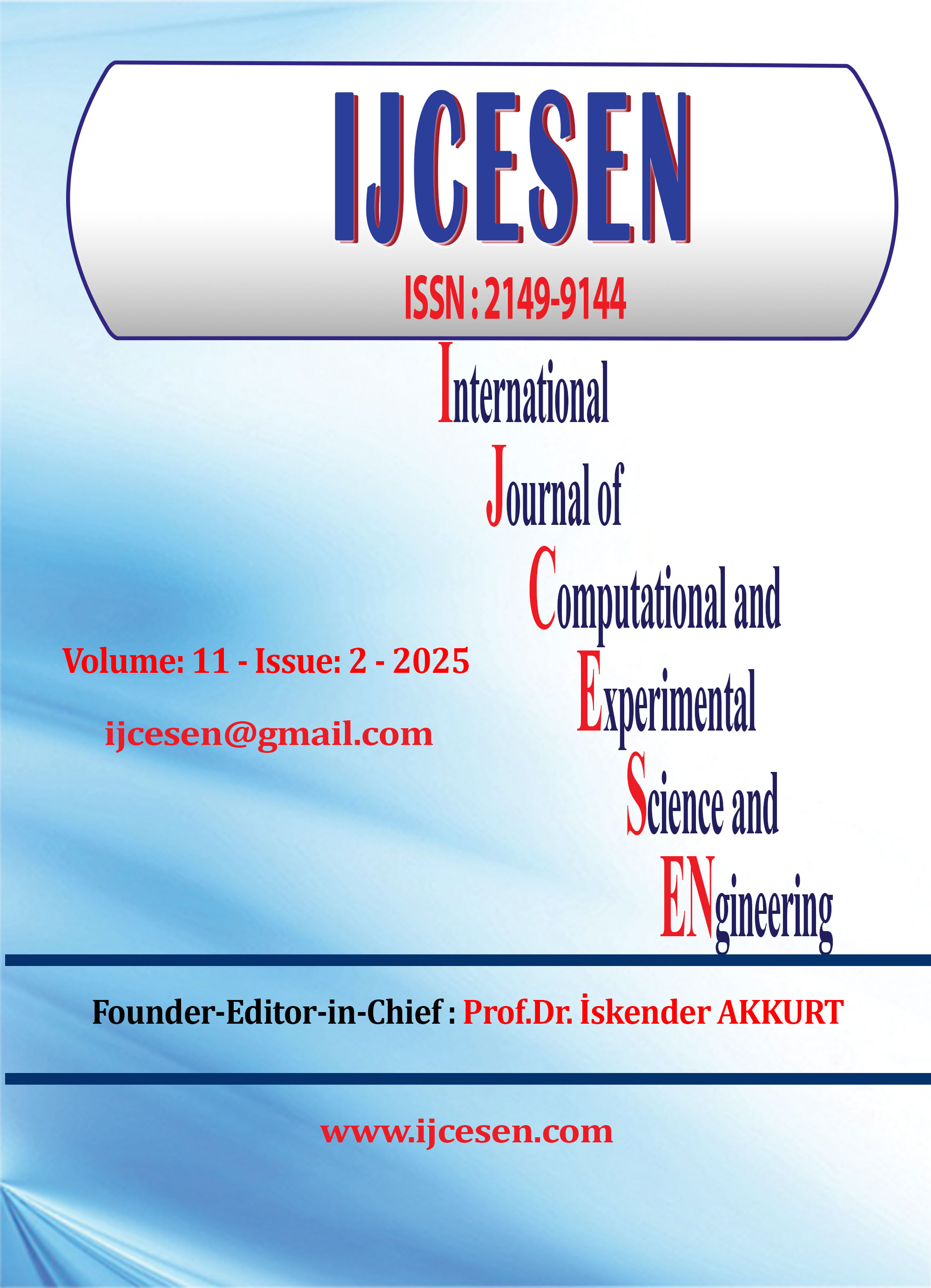ANFIS-Based Traffic Accident Prediction Model for Karnataka State
DOI:
https://doi.org/10.22399/ijcesen.2137Keywords:
Accident prediction, Machine learning, ANFIS, Fuzzy subtractive clustering, Weather ForecastingAbstract
Given the seriousness of road traffic accidents as a public health concern, it is critical to comprehend the variables linked to an increase in the severity of injuries sustained by those who intervene in accidents. To improve road safety, make better decisions about road safety, and lessen the severity of crashes in the future, it is crucial to identify these elements. The study aimed to collect traffic data, analyse it to identify suitable variables for accident prediction, and to develop an accident predictive model suitable for Indian conditions. The dataset comprised of 67 blackspots, each containing 16 variables. One innovative aspect of this study involves the utilization of the fuzzy subtractive clustering algorithm to predict the accident. This approach holds theoretical promise in terms of computational efficiency. This contrasts with the traditional exponential increase in computational load with data dimensionality. Root Mean Squared Error (RMSE), and Coefficient of Determination (R²) metrics were used to assess the model performance after the data was divided into training and validation sets, R2 of 0. 67 is obtained. The study emphasises the potential of machine learning to improve traffic safety.
References
[1] World Health Organization. (2023). Global status report on road safety 2023: Summary. World Health Organization.
[2] World Health Organization. (2019). Global status report on road safety 2018. World Health Organization.
[3] Wang, X., & Kim, S. H. (2019). Prediction and factor identification for crash severity: Comparison of discrete choice and tree-based models. Transportation Research Record, 2673, 640–653.
[4] Lin, M.-R., & Kraus, J. F. (2008). Methodological issues in motorcycle injury epidemiology. Accident Analysis & Prevention, 40, 1653–1660.
[5] Laiou, A., Papadimitriou, E., Yannis, G., & Milotti, A. (2017). Road safety data and information availability and priorities in South-East European regions. Transportation Research Procedia, 25, 3703–3714.
[6] Sukor, N. A., & Sadullah, A. M. (2017). Addressing the road safety results impasse through an outcome-based approach in the state of Penang, Malaysia. Engineering Heritage Journal, 1, 21–24.
[7] Li, Z., Liu, P., Wang, W., & Xu, C. (2012). Using support vector machine models for crash injury severity analysis. Accident Analysis & Prevention, 45, 478–486.
[8] Ibrahim, H., & Far, B. H. (2014). Data-oriented intelligent transportation systems. In Proceedings of the 2014 IEEE 15th International Conference on Information Reuse and Integration (IEEE IRI 2014) (pp. 322–329).
[9] Mohamed, E. A. (2014). Predicting causes of traffic road accidents using multi-class support vector machines. Journal of Communication and Computer, 11, 441–447.
[10] Effati, M., Thill, J.-C., & Shabani, S. (2015). Geospatial and machine learning techniques for wicked social science problems: Analysis of crash severity on a regional highway corridor. Journal of Geographical Systems, 17, 107–135.
[11] Perone, C. S. (2015). Injury risk prediction for traffic accidents in Porto Alegre/RS, Brazil. arXiv preprint, arXiv:1502.00245.
[12] Sharma, B., Katiyar, V. K., & Kumar, K. (2016). Traffic accident prediction model using support vector machines with Gaussian kernel. In Proceedings of Fifth International Conference on Soft Computing for Problem Solving: SocProS 2015, Volume 2 (pp. 1–10).
[13] Gu, X., Li, T., Wang, Y., Zhang, L., Wang, Y., & Yao, J. (2018). Traffic fatalities prediction using support vector machine with hybrid particle swarm optimization. Journal of Algorithms & Computational Technology, 12, 20–29.
[14] Al-Radaideh, Q. A., & Daoud, E. J. (2018). Data mining methods for traffic accident severity prediction. International Journal of Neural Networks and Advanced Applications, 5, 1–12.
[15] Farhat, Z., Karouni, A., Daya, B., & Chauvet, P. (2019). Comparative study between decision trees and neural networks to predict fatal road accidents in Lebanon. In 5th International Conference on Computer Science, Information Technology (pp. 1–14).
[16] Karthik, D., & Vijayarekha, K. (2020). Identifying efficient road safety prediction model using data mining classifiers: Recent advancements.
[17] Cui, H., Dong, J., Zhu, M., Li, X., & Wang, Q. (2022). Identifying accident black spots based on the accident spacing distribution. Journal of Traffic and Transportation Engineering (English Edition), 9, 1017–1026.
[18] Karamanlis, I., Kokkalis, A., Profillidis, V., Botzoris, G., & Galanis, A. (2023). Identifying road accident black spots using classical and modern approaches. WSEAS Transactions on Systems, 22, 556–565.
[19] Mbarek, A., Jiber, M., Yahyaouy, A., & Sabri, A. (2023). Black spots identification on rural roads based on extreme learning machine. International Journal of Electrical and Computer Engineering, 13, 3149–3160.
[20] Manoj, P. (2023). Enhancing road safety through blackspots mitigative measures – A review. Sigma Journal of Engineering and Natural Sciences – Sigma Mühendislik ve Fen Bilimleri Dergisi. https://doi.org/10.14744/sigma.2023.00077
Downloads
Published
How to Cite
Issue
Section
License
Copyright (c) 2025 International Journal of Computational and Experimental Science and Engineering

This work is licensed under a Creative Commons Attribution 4.0 International License.





